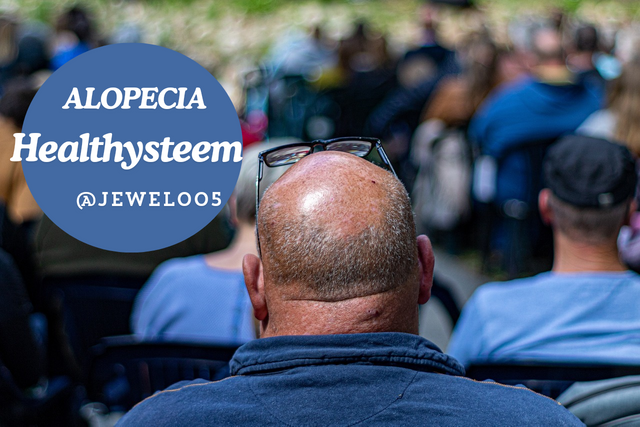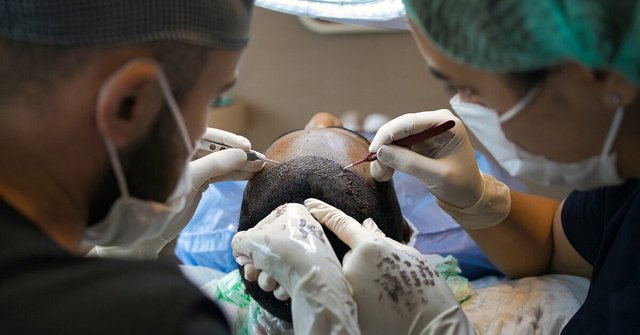 |
|---|
Good evening my dear steemians, how are you guys doing over there, I guess everything is great. So now I want to participate in this beautiful contest organized by (@khursheedanwar in healthy Steem community). Without much time let say something about this disease.
WHAT IS ALOPECIA |
|---|
ALOPECIA is an autoimmune disease that causes hair loss anywhere in the body, it's also known as the medical term for baldness.It's commonly affect the hair on the skin that covers the head (scalp). It's a disorder that occurs when the immune system criticize hair follicles which are the structures in skin that made hair and this brings about hair loss in the skin.
It's possible that anyone can have alopecia both men and women equally, and it's affect all racial and ethnic groups. It's can be at any age but most people get it in their teens. It's tends to be more extensive and progressive when it's occurs in children younger than age 10.
Also people with certain autoimmune disease, such as thyroid or vitiligo disease, are more likely to get alopecia. No doubt that emotional stress or an illness can bring on alopecia in people who are at risk but there no obvious trigger in most cases.
PATTERNS OF ALOPECIA |
|---|
These are few main types of alopecia which are commonly known;
PATCHY ALOPECIA AREATA:This is the most commonly known type of alopecia that affect people. In such pattern of alopecia, hair loss occurs in one or several coin-sized patches on the crown or more parts of the body.
ALOPECIA TOTALIS: This is the type of alopecia in which people infected by it losses all or nearly all of the hair on their scalp.
ALOPECIA UNIVERSALIS: This the rarest type of alopecia, in this type, the person infected by it completely or nearly completely loss all the hairs on the scalp, face and rest of the body
DIFFUSE ALOPECIA AREATA: In this type of alopecia, the person infected doesn't experience falling out of hair either in patches or any form rather the hairs get thinner.
OPHIASIS ALOPECIA AREATA: In this form of alopecia, the person infected loss a band of hair on the bottom back side of the scalp, also known as occipitotemporal scalp.
TREATMENT |
|---|
 PIXABAY PIXABAY |
|---|
It's obvious that alopecia doesn't go away, you can only take treatment and medications to help manage the hair loss, here are some certain medications and treatment that can be taken to manage the hair loss;
USE OF CORTISCOSTEROIDS: This is anti-inflammatory drugs which are often used for the treatment alopecia. It's can be injected into the scalp, or you can take it orally as a pill or applied (rubbed) it on your skin as cream or foam.
MINOXIDIL: This is another drug that treat male or female alopecia. It's usually takes about 12 weeks of treatment before the hair begins to grow.
PLATELET-RICH PLASMA: This is a method of alopecia treatment where blood will be removed from the body, processes and then injected back into the scalp to stimulate hair growth.
STYLING TECHNIQUES: This is a method you can use if your body doesn't respond to the treatment I listed above. You can obscure or hide your hair loss with certain hairstyles, wigs or hair weaves.
CONCLUSION |
|---|
Alopecia can be unpredictable, after engaging in different treatment on the disease, in some people, their hair grows back but falls out again later. But in some people their hair may grow back and never fall out again. Each case of alopecia is special, the fact is that even if some loss his hair there's a possibility that it's may grow back depending on the remedy and it's effectiveness.
%20-%202023-08-25T221709.806.png)
can't wait to see these my friends entry, if they haven't.
@edgargonzalez
@Mvchacin
@dexsyluz
MY REGARDS @khursheedanwar |
|---|

This post have been promoted on X
https://twitter.com/JoelUdobang/status/1800327720951292247?t=CFwDJKHpwJe4NMnfX1P_Ug&s=19
Downvoting a post can decrease pending rewards and make it less visible. Common reasons:
Submit